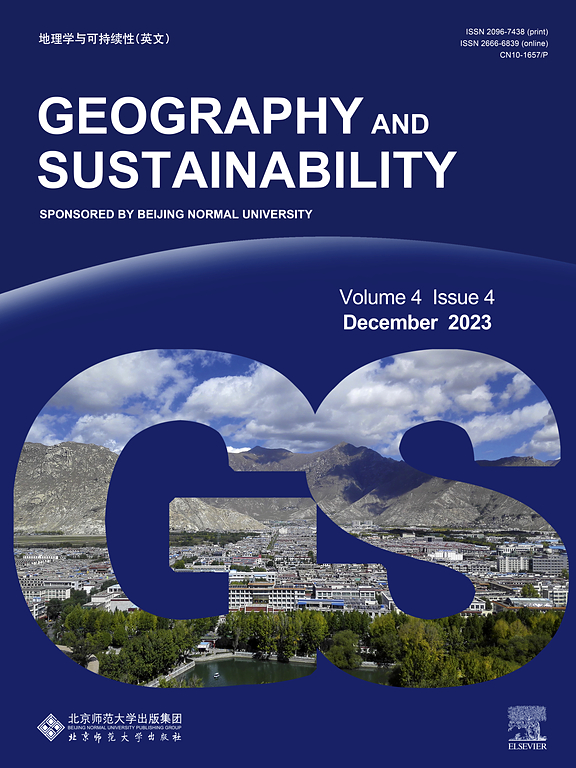Increased corn cultivation exacerbated crop residue burning in Northeast China in the 21st century
IF 8
1区 环境科学与生态学
Q1 GEOGRAPHY, PHYSICAL
引用次数: 0
Abstract
China’s endeavors to mitigate recurrent crop residue burning (CRB) and improve air quality have yielded positive results owing to recent pollution prevention policies. Nonetheless, persistent challenges remain, particularly in the Northeast China (NEC), where low temperature complicates crop residue management. Here, we examined the effects of cropping pattern adjustment on variations of CRB patterns in NEC during 2001–2021, utilizing the Moderate-resolution Imaging Spectroradiometer (MODIS) burned area dataset, the Visible Infrared Imaging Radiometer Suite (VIIRS) active fire dataset, and the high-accuracy crop planting area maps. Our results revealed an overall upward trend of 805.96 km2/yr in NEC CRB from 2001 to 2021. The corn CRB area accounted for more than 50% of the total CRB area in each CRB-intensive year (2013–2021), and the increasing corn CRB generally aligns with the growing corn cultivation fields. A seasonal shift in CRB was found around 2017, with intensive CRB activities transitioning from both autumn and spring to primarily spring, particularly in the Songnen Plain and Sanjiang Plain. The changing trend of PM2.5 concentration aligned spatially with the shift. Moreover, the CRBs in spring of 2020 and 2021 were more severe than the major burning seasons in previous years, likely due to the disruptions during COVID-19 lockdowns. In certain years, the explanatory power of spring CRB on PM2.5 concentration was comparable to that of other natural factors, such as precipitation. This study underscores the critical need for sustained and region-specific strategies to tackle the challenges posed by CRBs.

求助全文
约1分钟内获得全文
求助全文
来源期刊

Geography and Sustainability
Social Sciences-Geography, Planning and Development
CiteScore
16.70
自引率
3.10%
发文量
32
审稿时长
41 days
期刊介绍:
Geography and Sustainability serves as a central hub for interdisciplinary research and education aimed at promoting sustainable development from an integrated geography perspective. By bridging natural and human sciences, the journal fosters broader analysis and innovative thinking on global and regional sustainability issues.
Geography and Sustainability welcomes original, high-quality research articles, review articles, short communications, technical comments, perspective articles and editorials on the following themes:
Geographical Processes: Interactions with and between water, soil, atmosphere and the biosphere and their spatio-temporal variations;
Human-Environmental Systems: Interactions between humans and the environment, resilience of socio-ecological systems and vulnerability;
Ecosystem Services and Human Wellbeing: Ecosystem structure, processes, services and their linkages with human wellbeing;
Sustainable Development: Theory, practice and critical challenges in sustainable development.
 求助内容:
求助内容: 应助结果提醒方式:
应助结果提醒方式:


